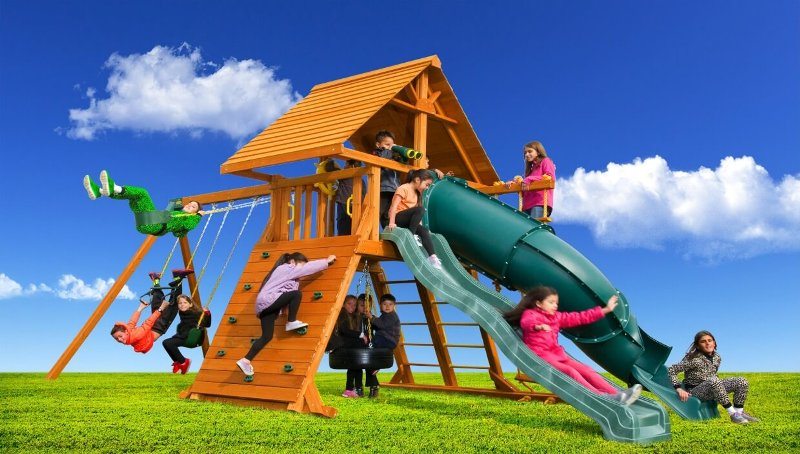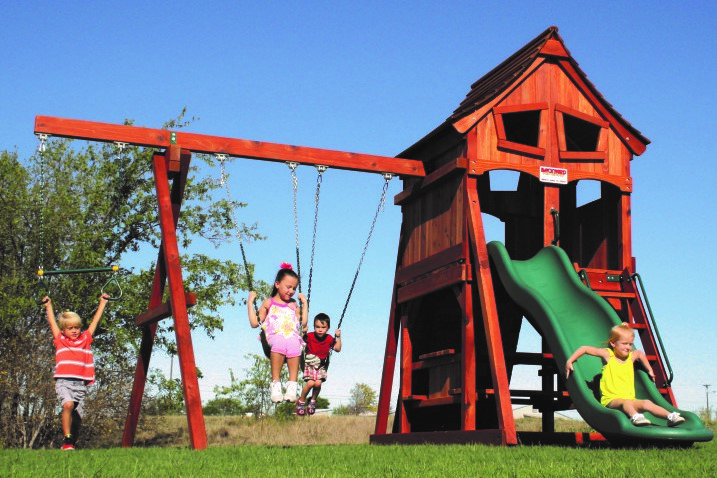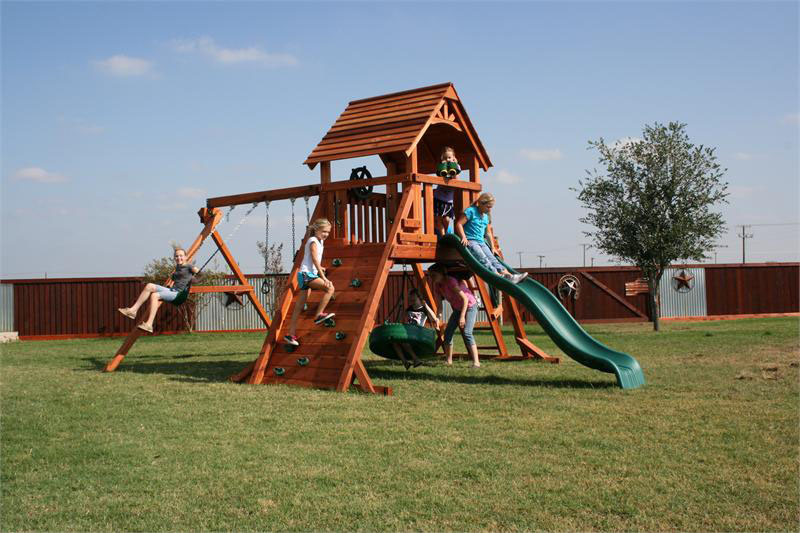 August 30, 2018 8:35 pm
August 30, 2018 8:35 pm
The next time you see your kids enjoying themselves on the wooden swing set or sliding board at your local playground, think of Charles Wicksteed.
Wicksteed was a British engineer whose company built the first commercial playground in 1921, fashioning swings from the pipes in his factory. In 2013, a couple in the UK found one of those swing sets in their garden, still more or less in working condition.
But the history of playgrounds and swing sets goes back much further than post-World War I England. In this week’s blog post, we’ll explore the history of the swing set.

The first swing set
What did the first swing set look like? Well, chances are it was nothing like the type of elaborate wooden swing set you might dotting your neighborhood.
Historical artifacts suggest that the Ancient Greeks had swings of their own, rudimentary contraptions with rope and wood. Vase painting from that era depict women and children playing on swings.
Fast forward several centuries to the 18th century. Swings were – if not common – at least not unheard of in Europe during this time.
Paintings from this era often depict women using outdoor swings. The most famous example of this is perhaps The Swing by Jean Honore Fragonard. It’s a classic example of the Rococo style of artwork, a hallmark of the French aristocracy during the pre-Revolutionary era.
That isn’t to say that swings were only for the rich. As they traveled the American west during the 1800s, pioneer families fashioned wooden swing sets from sticks and ropes tied to a tree.
Meanwhile, the first public playgrounds were being envisioned in Germany, designed to make kids more accustomed to sharing.
Known as “sand gardens,” these spaces spread to America by the late 19th century, but it’s not like swing sets and playgrounds took off from there.
The humanitarian case for playgrounds
“Until the turn of the 20th century, playgrounds remained uncommon in public spaces, ” writes Kaitlin O’Shea in an article published by the National Trust for Historic Preservation.

“But as industrialization and urbanization grew, so did the concern for public welfare,” she continued. “Humanitarians saw playgrounds as the solution to cramped quarters, poor air quality, and social isolation. This new concept could keep children off the dangerous streets and help them develop their physical health, good habits, socialization skills, and the pleasure of being a child.”
This led to the formation of the Playground Association of America, a group designed to promote the benefit of playgrounds, and help communities by coordinating the building and design.
Their vision was a space with play areas and athletic fields for girls and boys, along with gardens, shelters, swimming pools and bathrooms/bathing areas.
These weren’t the chaotic playgrounds your kids might be used to. The Association wanted to train people as instructors to help organize children’s play. In this case, “play” could mean everything from lessons on how to use the playground equipment to theater productions.
The equipment was also quite different, O’Shea notes, made “with galvanized steel pipes, strikingly vertical and horizontal elements,” and considered unsafe by modern Consumer Product Safety Commission standards.
Swing sets and playgrounds have come a long way over the centuries, and Swing Set & Toy Warehouse is proud to have been at the forefront of that evolution, committing ourselves to providing the best swing sets to our customers.
Whether you’re looking for an extravagant wooden swing set or a smaller space saver set, we can help you and your family find the best swing set for you.
Visit one of our four locations today to find a swing set that can become part of your family’s history.
Categorized in: Blog

